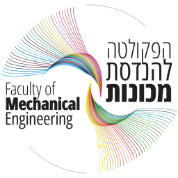
Yoram
Halevi
-
DK, 320
Education
- 1974 – B.Sc., Faculty of Mechanical Engineering, Technion – I.I.T.
- 1981 – M.Sc., Faculty of Mechanical Engineering, Technion – I.I.T.
- 1985 – D.Sc., Faculty of Mechanical Engineering, Technion – I.I.T.
Research Interests
- Control of flexible structures
- Optimal control of redundant systems
- Model updating and Structural Health Monitoring
- Order reduction
- Optimal control and estimation
Guest Appointments
- Visiting Scientist, CNR-ITIA, Milan, Italy (2010)
- Visiting Professor, Department of Mechanical Engineering, Virginia Tech (2003-04)
- Visiting Professor, Department of Mechanical Engineering, Ohio State University (1992-93)
- Visiting Scholar, Department of Mechanical Engineering, Penn State University (1988, 1989)
- Assistant Professor, Department of Mechanical Engineering, Penn State University (1986-87)
Public Professional Activities
- Dean, The Pernick Faculty of Engineering, Shenkar – Engineering. Design. Art (2021-2025).
- Dean, Faculty of Mechanical Engineering, Technion (2014-2018)
- Editor, Mechanical Systems and Signal Processing (MSSP) (2017-
- Member, Steering Committee of Technion – Guandong Institute of Technoloy (2014-2016)
- Program Chair, 12th Biennial ASME Conference on Engineering Systems Design and Analysis (ESDA), Copenhagen, Denmark (2014).
- Dean, Division of Continuing Education and External Studies (2013-2014)
- Chair, ASME District H (Europe) ESDA Conference Committee (2009 – 2011)
- General Chair, 9th Biennial ASME Conference on Engineering Systems Design and Analysis (ESDA), Haifa, Israel (2008).
- General Chair, 29-th Israel Conference on Mechanical Engineering (2003)
- Member, Program Committee of the American Control Conference (2003)
- President, Israel Association of Automatic Control (2000-2004)
- Head, Israeli section of ASME (2002-2011)
Honors and Awards
- Yanai Prize for Excellence in Academic Education (2012)
- ASME Fellow (2011)
- James H. Belfer Chair in Mechanical Engineering (2009)
Selected Publications
- Z.J. Palmor and Y. Halevi, “On the Design and Properties of Multivariable Dead Time Compensators”, Automatica, 19(3), 255 – 264, 1983.
- Z.J. Palmor and Y. Halevi, “On the Existence of an Optimal Observer in Singular Measurement Systems”, IEEE Transactions on Automatic Control, AC-31, 683-685, 1986.
- Y. Halevi and A. Ray, “Integrated Communication and Control Systems: Part I – Analysis”, ASME Journal of Dynamic Systems, Measurement and Control, 110(4), 367 – 373, 1988.
- Y. Halevi, “The Optimal Reduced Order Estimator for Systems with Singular Measurement Noise”, IEEE Trans. on Automatic Control, AC-34, 777-781, 1989.
- Y. Halevi, “Frequency weighted model reduction via optimal projection equations”, IEEE Trans. on Automatic Control, AC-37, 1537-1542, 1992.
- A. Cohen-Jalfon and Y. Halevi, “On partially augmented observers for systems with colored noises”, Int. J. of Control, 57, 335-349, 1993.
- Y. Halevi, W.M. Haddad and D.S. Bernstein, “A Riccati equation approach to the singular LQG problem”, Automatica, 29, 773-778, 1993.
- Y. Halevi, “Stable LQG controllers”, IEEE Trans. on Automatic Control, AC-39, 2104-2106, 1994.
- Y. Halevi, Z.J. Palmor and T. Efrati, “Automatic Tuning of Decentralized PID Controllers for MIMO Processes”. J. of Process Control, 7, 119-128, 1997.
- R. Kenigsbuch and Y. Halevi, “Model Updating in Structural Dynamics: A Generalized Reference Basis Approach”, Mechanical Systems and Signal Processing, 12(1), 75-90, 1998.
- A. Zlochevsky and Y. Halevi, “Parameter Dependent Reduced Order Estimators”, J. of Guidance, Control and Dynamics, 22, 846-851, 1999.
- Y. Naveh, P.Z. Bar-Yoseph and Y. Halevi,”Nonlinear Modeling and Control of a Unicycle”, Dynamics and Control, 9, 279-296, 1999.
- N. Raskin and Y. Halevi, “Rate Feedback Control of a Free-Free Uniform Flexible Rod”, J. of Guidance, Control, and Dynamics, 24, 1037-1040, 2001.
- Y. Halevi, “Approximated Gramians and Balanced Realization of Lightly Damped Flexible Structures “, IEEE Trans. on Automatic Control, 47, 193-198 , 2002.
- Y. Halevi, C. A. Morales, and D. J. Inman, “Combined Expansion and Orthogonalization of Experimental Modeshapes”, ASME J. of Vibration and Acoustics, 127, 188-196, 2005.
- Y. Halevi, “Control of Flexible Structures Governed by the Wave Equation Using Infinite Dimensional Transfer Functions”, ASME J. of Dynamic Systems, Measurement, and Control, 127, 579-588, 2005.
- Y. Halevi, “Projection Properties of the Optimal L2 Reduced Order Model”, International J. of Control, 79(4), 298-310, 2006.
- Y. Halevi, “On the Class of Reduced Order Models Obtainable by Projection”, Automatica, 42, 2009-2016, 2006.
- L. Sirota and Y. Halevi, “Free Response and Absolute Vibration Suppression of Second Order Flexible Structures – The Traveling Wave Approach.”, ASME J. of Vibration and Acoustics, 132 (3), 031008, 2010.
- L. Sirota and Y. Halevi, “Extended D’Alembert Solution of Finite Length Second Order Flexible Structures with Damped Boundaries”, Mechanical Systems and Signal Processing, 39 (1-2), 47-58, 2013.
- I. Peled, W.J. O’Connor and Y. Halevi, “On the relationship between wave based control, absolute vibration suppression and input shaping”, Mechanical Systems and Signal Processing, 39 (1-2), 80-90, 2013.
- Y. Halevi, E. Carpanzano and G. Montalbano, “Minimum Energy Control of Redundant Linear Manipulators”, ASME J. of Dynamic Systems, Measurement, and Control, 136(5), 051016, 2014.
- L. Sirota and Y. Halevi, ” Fractional order control of the two-dimensional wave equation”, Automatica. 59 (9), 152-163, 2015.
- U. Nusbaum, M. Weiss Cohen and Y. Halevi, “Path Planning and Control of Redundant Manipulators using Bi-level Optimization”, ASME J. of Dynamic Systems, Measurement, and Control, 142(4), 041008, 2020.
Are you interested in learning the profession of the future?
Faculty of Mechanical Engineering, Technion - Israel Institute of Technology, Haifa
"*" indicates required fields





